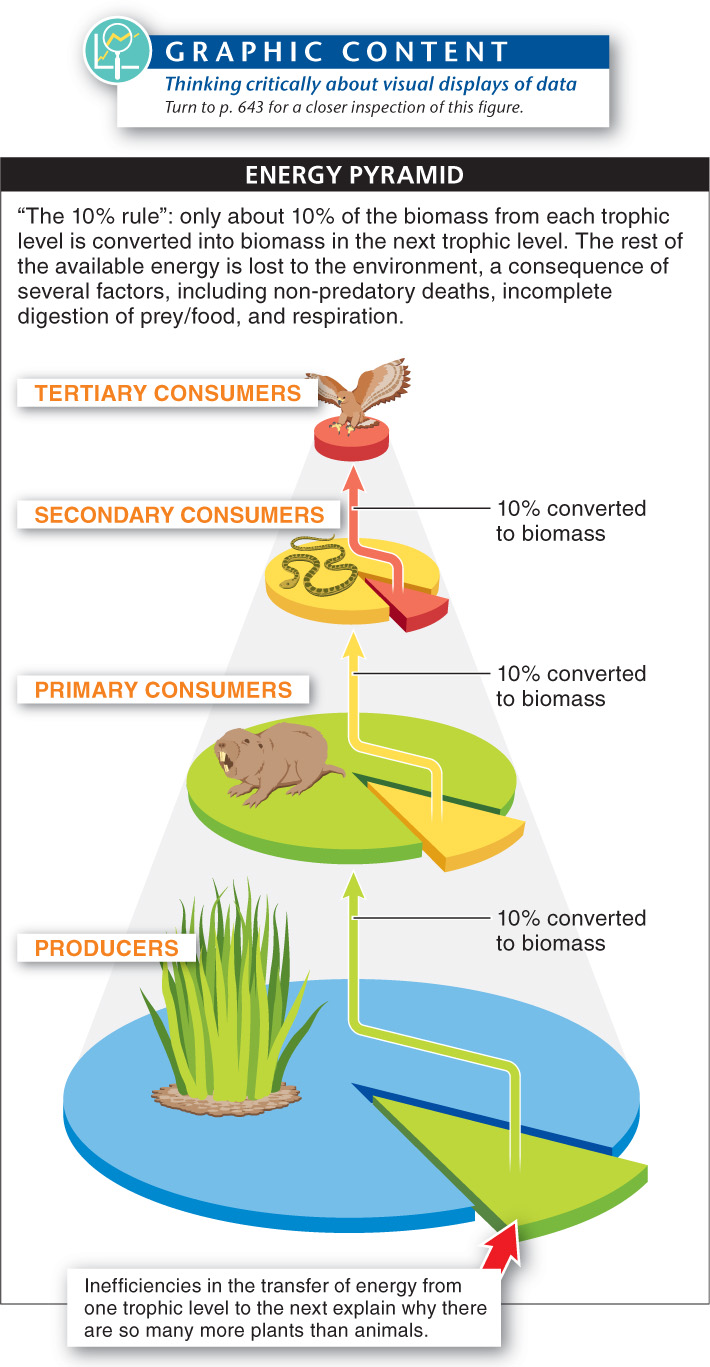Look out of the nearest window. What organisms can you see? Almost without fail, you will see green plant life. Maybe some trees, possibly bushes and grasses as well. You’ll have to look longer and harder to see any animals, but you’ll probably see a few, most likely small animals and various insects that eat plants. On the other hand, you might stare out of the window all day and not see any animals (other than some fellow humans) that eat other animals. Why? And why are big, fierce animals so rare? Also, why are there so many more plants than animals?
The answers to these questions are closely related to our observation that an animal consuming five pounds of plant material does not gain five pounds in body weight from its meal. The actual amount of growth such a meal can support is far, far less—
Why are big, fierce animal species so rare in the world?
Biomass is the total weight of living or non-
How much plant biomass would be required to support an even higher link on the food chain? Ten times as much—
We can illustrate the path of energy through the organisms of an ecosystem with an energy pyramid, in which each layer of the pyramid represents the biomass of a trophic level. In FIGURE 15-14, we can see that for terrestrial ecosystems, the biomass (in kilograms per square meter) found in photosynthetic organisms, at the base of the pyramid, is reduced significantly at each step, given the incomplete utilization by organisms higher up the food chain. FIGURE 15-15 illustrates the huge variation in primary productivity across a variety of ecosystems. It is highest in tropical rain forests, marshes, and algal beds, and lowest in deserts, tundra, and the open ocean. In each case, the shapes of the energy and biomass pyramids are similar. With a smaller base, though, the ability of an ecosystem to support higher levels in the food chain is reduced. One dramatic exception is seen in some aquatic ecosystems where the producers are plankton. Because plankton have such short life spans and rapid reproduction rates, a relatively small biomass can support a large biomass of consumers, giving rise to an inverted pyramid (see the bottom pyramid in Figure 15-15). However, if you quantified the amount of energy available to consumers (rather than measuring biomass), the pyramid would resemble those seen in terrestrial ecosystems.


623
TAKE-HOME MESSAGE 15.7
Energy pyramids reveal that the biomass of producers in an ecosystem tends to be far greater than the biomass of herbivores. Similarly, the biomass transferred at each successive step in the food chain tends to be only about 10% of the biomass of the organisms consumed. Due to this inefficiency, food chains rarely exceed four levels.
Only about 10% of the biomass of an organism at one trophic level is converted into biomass of an organism at the next trophic level. List two consequences of this inefficiency.
(1) There are far more plants than animals. (2) Top carnivores are relatively rare.
624